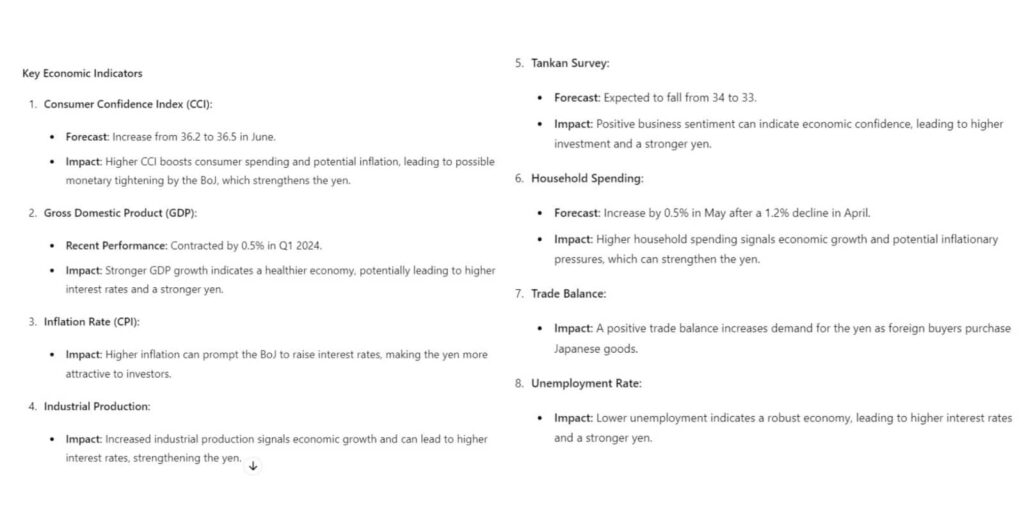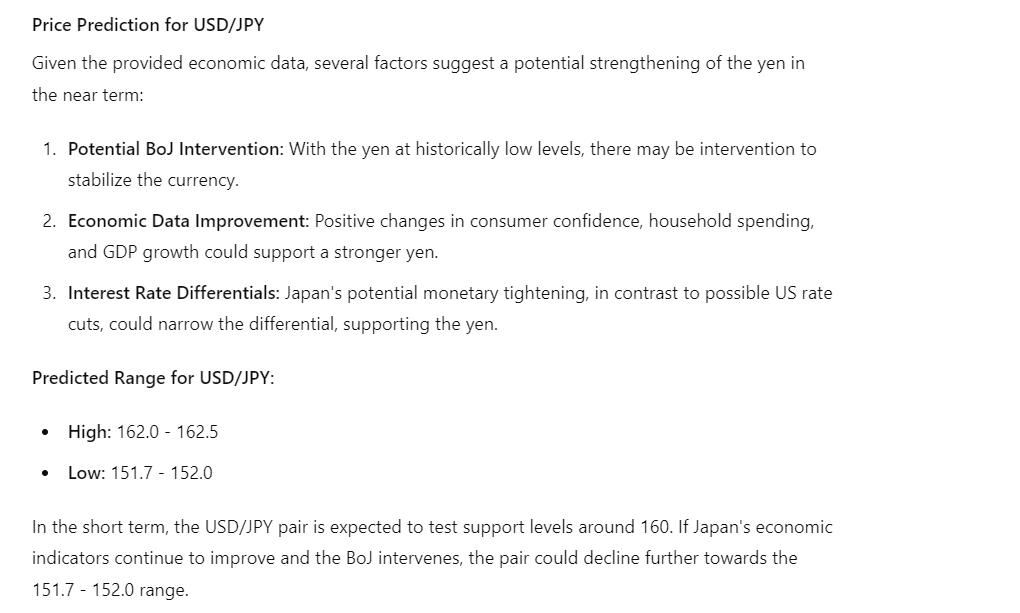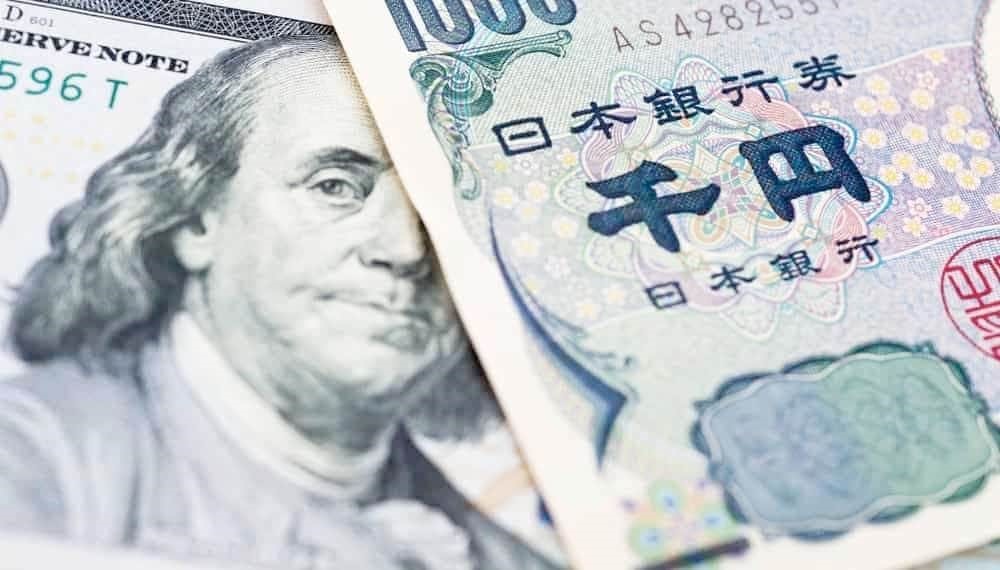The Japanese yen (JPY) has plunged to its lowest level in 38 years, trading at $0.0062 against the U.S. dollar (USD) as of June 28. This marks the yen’s weakest point since 1986, highlighting a significant drop amid policy shifts and interest rate differentials approaching levels that could trigger further action from the Bank of Japan (BoJ).
The depreciation is largely attributed to the contrasting monetary policies between Japan and other major economies, particularly the United States, where interest rates have been rising.
Given the yen’s prolonged decline, there are expectations that Japanese authorities might soon intervene to stabilize the currency.
In this context, Finbold sought insights from ChatGPT-4o, OpenAI’s most advanced artificial intelligence (AI) model, to understand the potential price trajectory of the Japanese yen.
ChatGPT-4 analyzes market data and economic indicators
According to ChatGPT-4o, in the short term, the USD/JPY pair is expected to test the support level at 160. If Japan’s economic indicators continue to improve and the BoJ intervenes, the pair could move lower towards the 151.7 – 152.0 range.


Consumer confidence and service sector indicators
Japan’s consumer confidence numbers are expected to rise from 36.2 to 36.5 in June, according to the data from Trading Economics. An increase in consumer confidence could suggest heightened household spending and demand-driven inflationary pressures, potentially prompting the BoJ to consider rate hikes.
Historically, the Consumer Confidence Index weakened in April and May after reaching a high of 39.1 in February 2024. This decline mirrors broader economic challenges, including a 0.5% contraction in Japan’s economy in Q1 2024 and a 0.7% decline in private consumption.
Service sector indicators and their impact are also crucial. The upcoming Tankan survey-based figures for Q2 2024 will be critical, with economists forecasting the Tankan Large Non-Manufacturing Index to fall from 34 to 33.
Additionally, revisions to the preliminary Jibun Bank Services PMI, which dropped from 53.8 to 49.8 in June, as reported by FXStreet could further complicate expectations for a July BoJ rate hike.
Despite potential contractions in the services sector, increased household spending might still support the case for a policy shift.
Household spending and BoJ policy
Household spending data, due on Friday, July 5, is also vital. Economists predict a 0.5% increase in May following a 1.2% decline in April. Better-than-expected figures could influence the BoJ’s monetary policy decision in July.
Investors should also monitor potential intervention threats and BoJ commentary, as concerns about the yen’s weakness impacting the Japanese economy could lead to significant policy actions, including interest rate hikes and aggressive cuts to Japanese Government Bonds.
While weak numbers could affect demand for the yen, intervention threats and a more hawkish BoJ could counteract these effects. The USD/JPY currently hovers comfortably above the 50-day and 200-day EMAs, suggesting bullish price signals.
A break above the June 28 high of 161.283 could signal a move toward the 162 handle. Conversely, a break below the 160 handle could lead to a decline toward the 50-day EMA, with a potential fall to the 151.685 support level.
Given the current economic indicators and potential policy shifts, the USD/JPY pair could test support levels around 160 in the near term.
If Japan’s economic indicators continue to improve and the BoJ intervenes, the pair could decline further towards the 151.7 – 152.0 range.
Investors should stay vigilant about intervention threats, central bank commentary, and respective economic stats from Japan and the US to navigate potential movements in the USD/JPY exchange rate.
Disclaimer: The content on this site should not be considered investment advice. Investing is speculative. When investing, your capital is at risk.







